What a drag it is getting old. Jagger and Richards had it right. They were just 23 years old when they wrote that. Look at them still going strong in their 70’s, five decades later still rocking it. When it comes to our health, mobility, and athletic performance, isn’t that something we all want?
I started out in OCR when I was 50 years old. I was that far out old man who the youngsters wanted to emulate. They told me over and over they hoped they could be in as good shape when they were my age. My goal is to be in this good shape for the rest of my life.
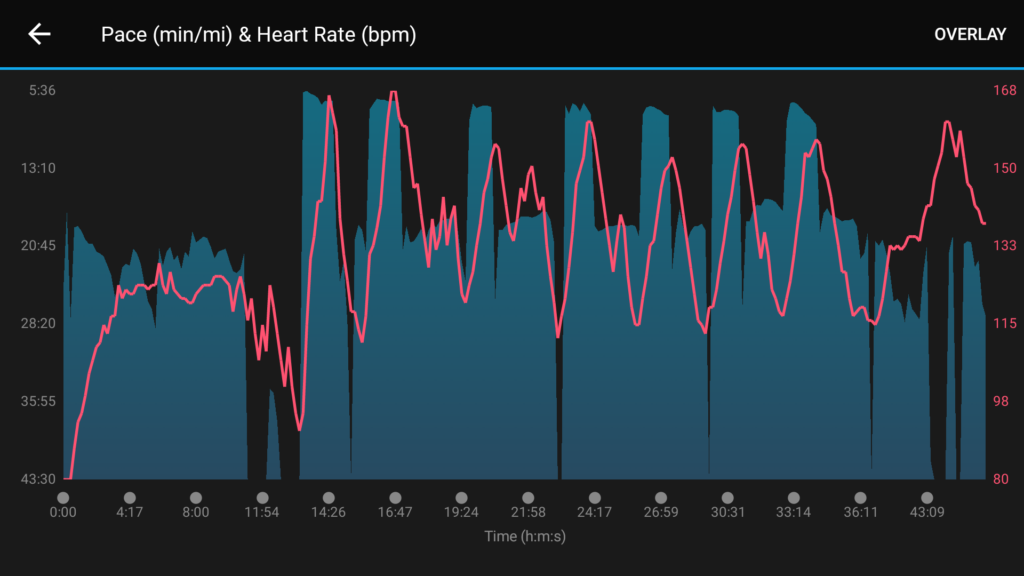
A typical run walk at 5k race pace
The problem I began noticing over the past two seasons, however, was that I was getting slower. I was always on the precipice of taking a top slot in my age group. My first naïve attempt at a takeover was to master technique on the obstacles. The workouts were great but ended up not saving as much time as I needed. I had to face it. I had to get a running coach.
The choice came down to Richard Diaz and Dennis Wayne Welch. The decision was made on a calendar and cost basis. Welch’s new program, The Endurance Project, just started up in late 2017. For $20 a month on an ongoing basis, he provided a training plan, interactive website, and a growing community of like-minded athletes. I started in February this year.
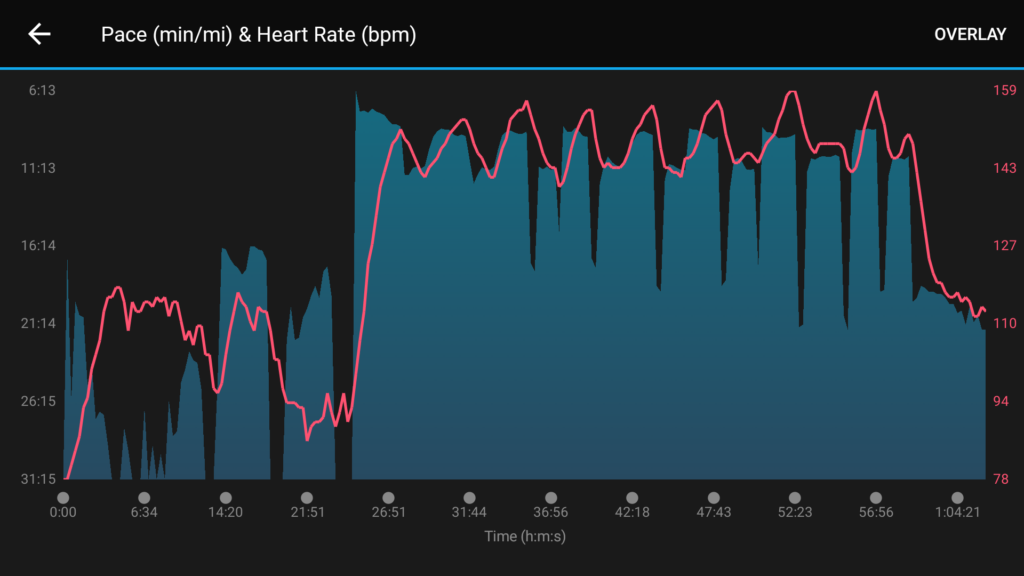
A typical interval run using my calculated interval and marathon paces
The first lesson that got drilled into me multiple times was to slow down – way down. Then I was told to decrease my weekly mileage – way decrease. Then I was told to start dragging a tire every day for warmups. I was already doing that maybe once or twice a month, running with it. Nope. Walk. I totally changed my running routine, reinforced the mechanics and form, and stuck with the promise that if I did as I was told, I would get faster.
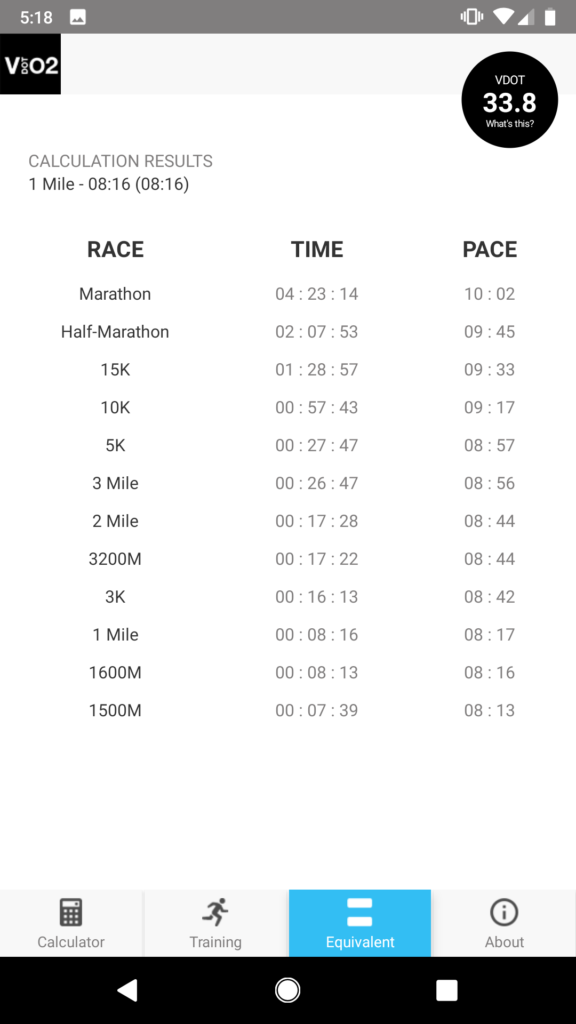
Use the VDOT O2 app to calculate appropriate paces for training and racing estimates
Lesson two was the mile time trial. This is the basic measure upon which training pace and heart rate is calculated. More on the heart rate in a minute. About every 2-3 months I ran an MTT to gauge improvement. I started on February 8 with a baseline of 9:26. I was fairly happy with that as I knew I could maintain that for a 3-5 mile race based on past performance. But I wanted more and as a trainee, I had yet to see what kind of results this program would deliver.
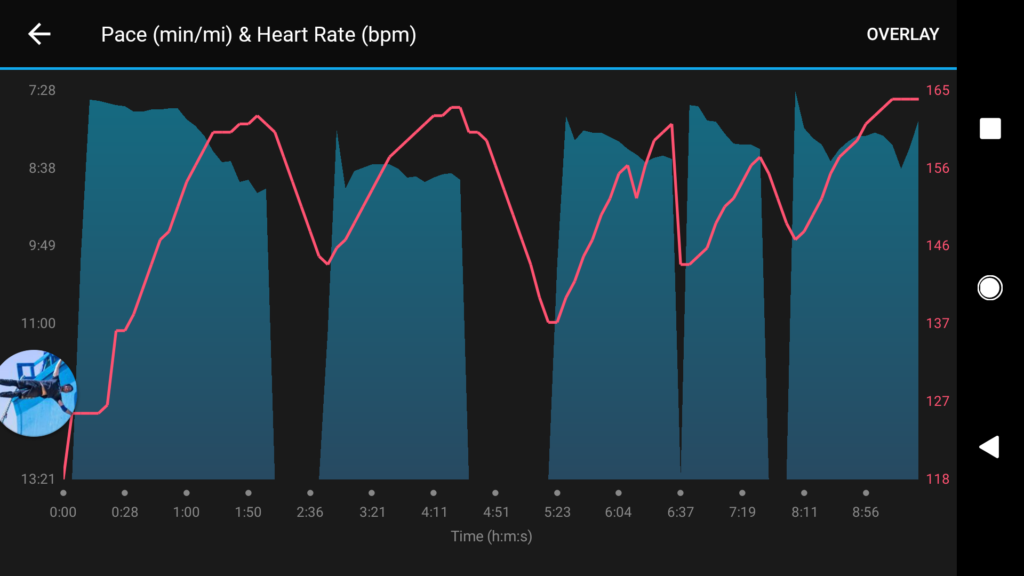
Baseline run February 8 – 9;16 MTT. I had to walk a lot
Lesson three was making friends with that tire. The training plan included a tire drag for at least 15 minutes just about every single day. I took the coach’s advice and bought a shoulder harness to replace my belt. That put the right force and angle on my body to ensure proper posture which in turn helped improve running mechanics. Then I also had to learn to walk with the tire, not run. Increasing weight on the tire helped adjust my heart rate to appropriate levels.
Which was lesson number four. All this tire training, slower running, and modified plans were really about training my heart to be a more efficient muscle. Like any other muscle, it has to be trained to be more aerobic, endure more time at various levels of intensity, and learn how to recover just as well. To get all this information, I bought a Garmin 235 and a chest strap heart rate monitor. So rather than a coach telling me to run for a particular distance (extremely rare) he tells me to run at a particular heart rate for the time. Most of that heart rate training was at Maximum Aerobic Function (MAF), or that threshold point where your body transitions from aerobic to anaerobic. I knew what those words meant but until I had the visual data to compare to my perceived level of effort, I did not understand exactly what coach meant when he said to slow down, way down. Build your aerobic base way up. The speed will come.
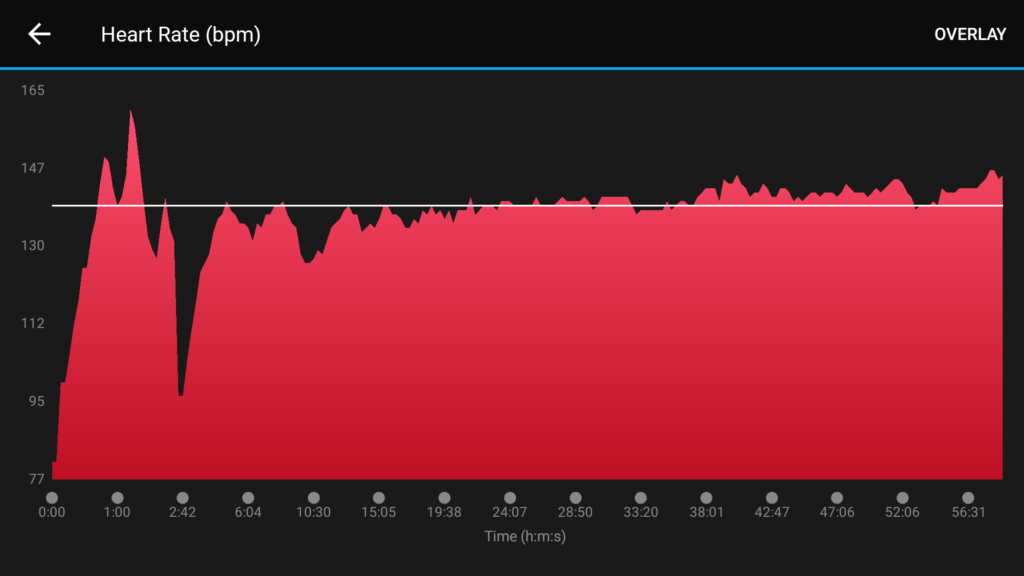
A typical MAF run for endurance time thanks to the tire
And it did. Just after the OCR season started, I did my second MTT and was happy to see a noticeable improvement in speed and running comfort. I went from 9:26 in February to 8:54 in May. But I wasn’t done. I knew that to compete in my age group at the Spartan Competitive bracket, I had a long way to go. I could easily compete there in the top 10%. But I wanted top 10 overall. Someday I want a podium. So I kept up with the training. After all, such improvement can take months or years depending on the individual athlete and dedication to the training.
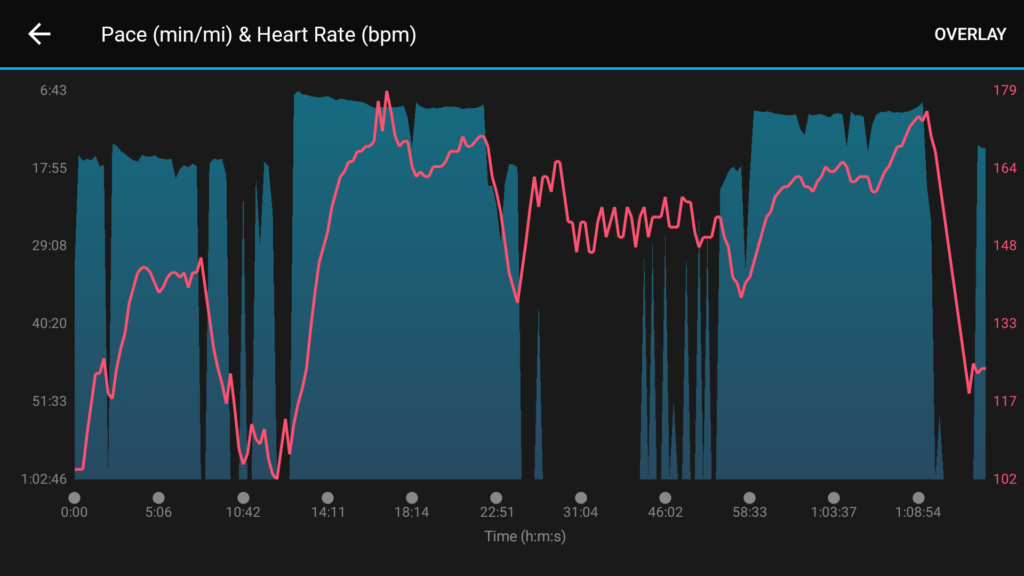
May 28 MTT – 8:54. Starts with a tire drag and ends with a cool-down run
And that is lesson number five. Like any type of training, you get out what you put in. As much as I would love to train up in the mountains of Colorado twice a day every day, the reality is I have a 9-to-5 job that also puts me on the road around 40% of the year. So my training often takes a back seat. So I do what I can both at home and on the road.
By the end of the season, just last weekend, I took my final MTT. I was very happy to hear my son call out the mile time as my friend John and I went at it. He baselined at 7:40 and I rambled in at 8:16. So in eight months of training, I shredded 1:10 off my MTT. My son is convinced that if I continue this way, I can get into a 7:30 range. And that will get me into top 10 on a lot of races in my age group.
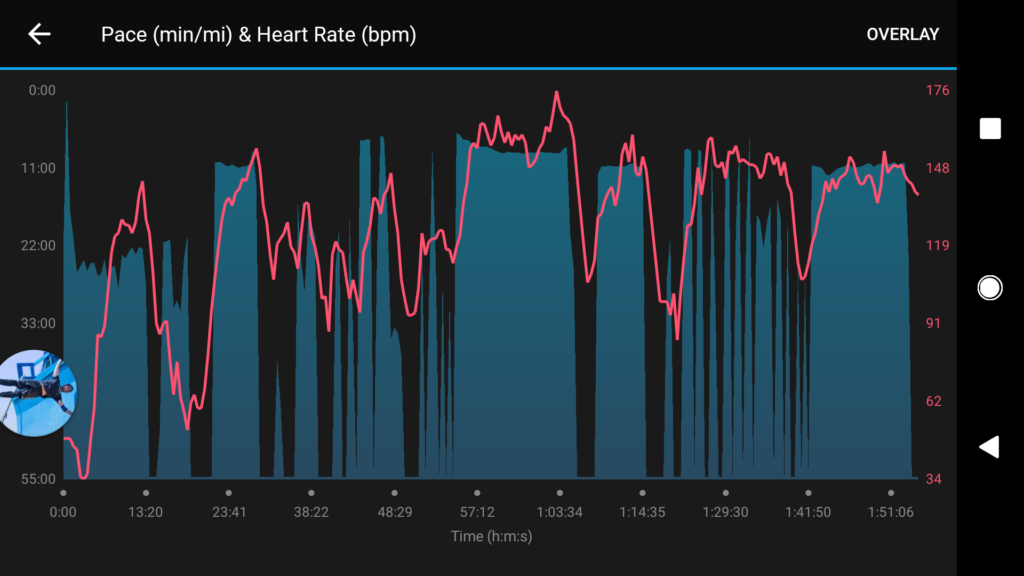
October 14 season cap at 8:16. My son led our warmup drills and cool-down run
I highly recommend The Endurance Project running program for your training. I give it 5 stars.


Leave A Comment